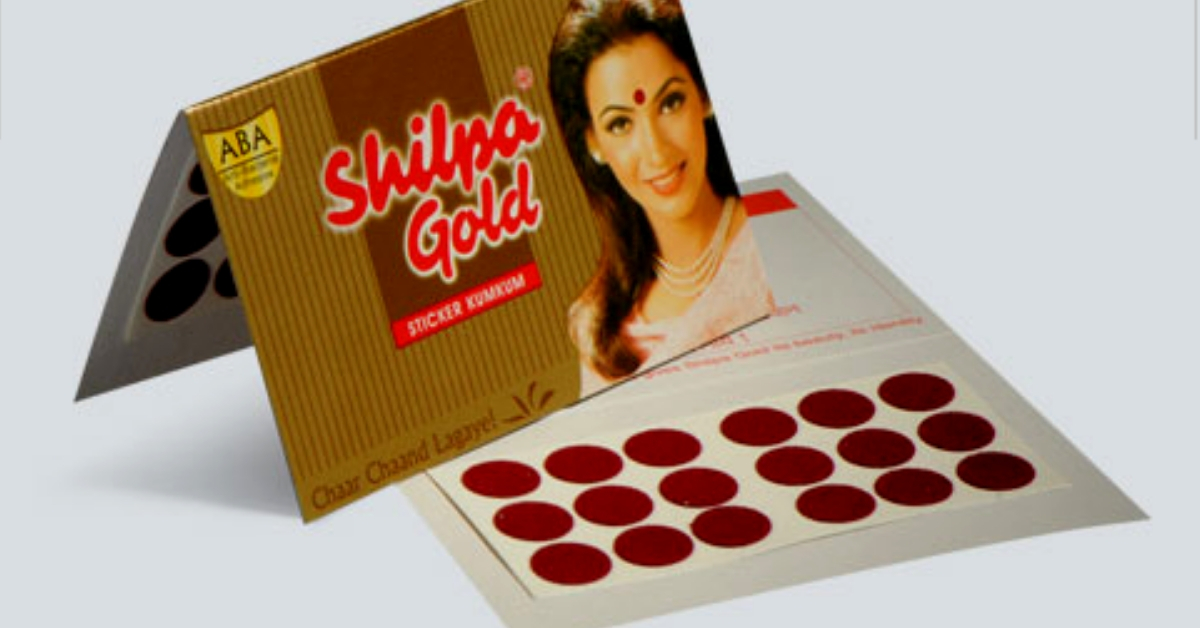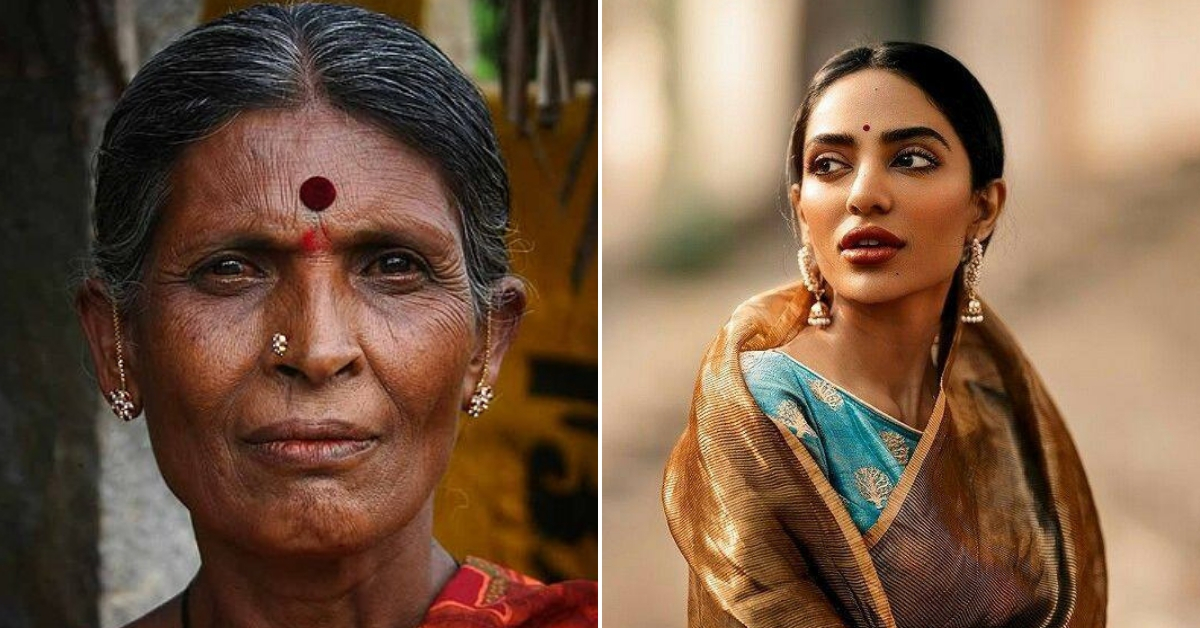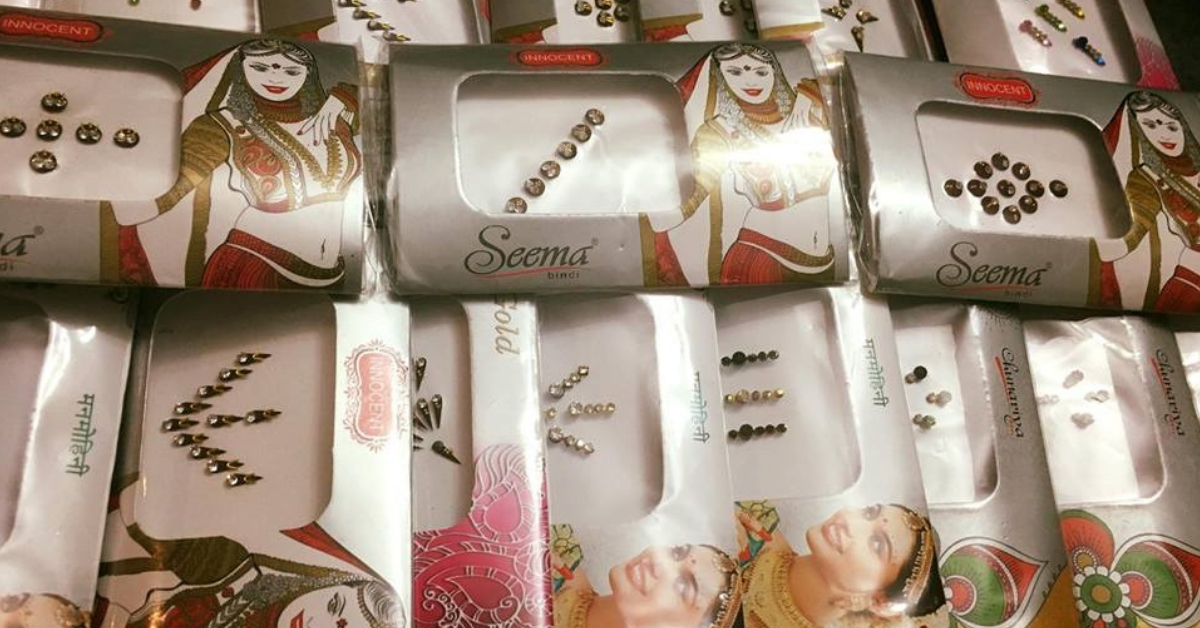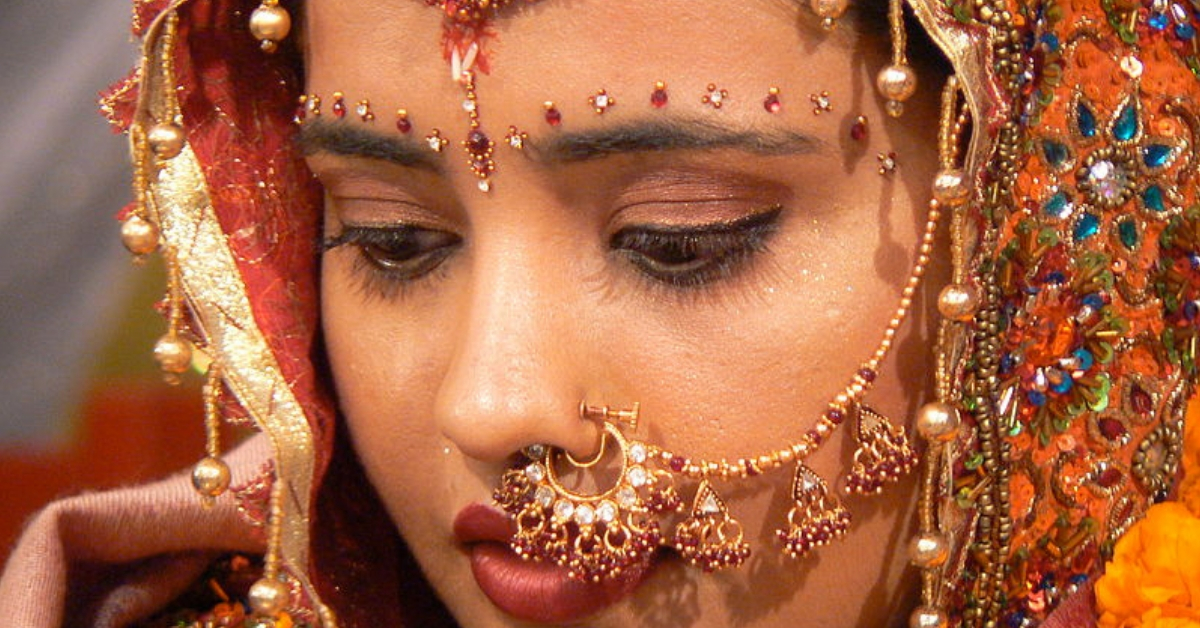The Story of Bindi: Connecting the Dots Between Culture, Fashion & Urban Women!
How did a simple bindi go from a being a cultural indication to a fashion statement? We take a brief look.

I must have been about eight years old when I realised that wearing ethnic wear was the “cool” thing to do. I would borrow my mother’s dupatta, drape it around like I believed sarees are draped and finally, take that simple red velvet bindi off the mirror and place it firmly between my brows. There, the look was complete.
If you are a child of the 90s or older, Shilpa, a bindi manufacturing brand, isn’t unknown to you. The one-fold golden cover, holding 20-odd simple bindis inside was a must in every urban household. Once a bindi was taken off from the cardboard cover, it travelled from a woman’s forehead to the mirror and back and forth until it finally got lost somewhere.
Fast forward a couple of decades and bindis remain one of two things—accessories which either generate nostalgia or complete your ethnic wear.
How did a simple bindi go from a being a cultural indication to a fashion statement? We take a brief look.

Until the 1970s, the small dot/design between a woman’s eyebrows was all that one needed to understand which religion she belonged to, whether she was married and what her caste was. Kumkum (vermilion), sandalwood, ash were used to mark various designs on the forehead, and those were like an identity badge.
This cultural evidence would soon merge with fashion, thanks to the revolution brought to India by Shilpa.
With imported felt and a reusable sticker on the reverse side that did not leave a mark, Shilpa introduced the “modern” version of the traditional status symbol. Indian women gobbled up the idea, and it stuck—literally and figuratively!
Soon enough, women in magazines, movies and TV series were wearing these velvet bindis. Even if they rubbed out the indication of status based on the prejudice of caste, they now served another purpose.
And what was that? Well, now that caste and marital status did not limit the design of the bindi; it opened up a wide array of options for women to decide how to design it.
Furthermore, with Shilpa’s innovation that punched perfectly uniform shaped bindis, the imagination was also backed by technology.

Remember Komolika’s large bindis complemented by her over-the-top make-up? Well, in Indian television, that became an indication of a woman’s nature. From caste to whether a woman was chaste—bindis changed how a woman was portrayed to audiences.
In real life though, the bindi was going way beyond a tiny red dot.
“The sticker-bindi market is expanding because lower-income women are switching from liquid kumkum. At the upper end, women will spend Rs 200 on a single embellished bindi rather than buy 200 of the Rs 1 bindis for casual use,” brand strategist Ambi Parameswaran told the Hindustan Times.
While the Shilpa brand began this revolution, others like Tanvi stepped up—the market was ripe for change, and customers were willing to pay good money even for a single “designer” bindi, making the business in the 1990s and early 2000s extremely profitable.
As more and more women opted for fancy, colourful, designer alternatives, these began to be manufactured by talented artisans and not expensive machinery, so anything from a garage to the artists’ own house was the perfect ‘factory.’

Soon enough, India became too small for the intricate accessory, and the Tanvi brand found a market in Greece, Spain, Brazil and other such countries where women were happy to accessorise their attire with big and bold designs. A dash of exotic and a splash of colour was perfect for the countries that revel in samba and the carnival. However, as the years passed, the occurrence of this “must-wear” accessory faded as other trends took over.
You may also like: Video: Watch What Doordarshan’s First Colour Telecast Looked Like – 36 Years Ago!
For a brief while, bindi manufacturers tried their hand at transforming the religious bindi to a “cool” tattoo—one that could be worn anywhere on your body, accessorising your lehenga or even your jeans-and-top attire. However, this trend did not take off.
“Today, we see less of the bindi because urban women are not wearing traditional clothes on a regular basis.
But wearing a bindi is quintessentially Indian—it will not go away in a hurry,” Anju Maudgal Kadam, who started the #100SareePact told Live Mint.

While that might be true for a large portion of the urban population, for whom the bindi is more of an accessory, and not an essential part of their attire, if not for iconic brands like Shilpa and Tanvi, the cultural connotations of the bindi might not have mingled with the fashion industry.
You may also like: A Taste of Nostalgia: 24 of India’s Most Famous Pre-Independence Eateries
Today, the accessory has a blurred place on a woman’s forehead—in rural areas it’s not a novelty, but in urban areas, it is one. Having said that, it isn’t uncommon these days to see women dressed in western clothes and still donning the good old red dot on their forehead. So while the dot transcends generations, attires and regions, interchanging its place and importance and at the same time, occupying the same place—forehead.
It is evident that the bindi might have changed its form, but it will also occupy a permanent place in an Indian woman’s heart. And even though the mirror lies vacant at my home without a small red bindi stuck on it temporarily, during festivals, I can’t imagine stepping out in my ethnic clothes without the tiny dot between my brows. It completes my look like nothing else can.
(Edited by Gayatri Mishra)
Like this story? Or have something to share?
Write to us: [email protected]
Connect with us on Facebook and Twitter.
This story made me
-
97
-
121
-
89
-
167
Tell Us More
We bring stories straight from the heart of India, to inspire millions and create a wave of impact. Our positive movement is growing bigger everyday, and we would love for you to join it.
Please contribute whatever you can, every little penny helps our team in bringing you more stories that support dreams and spread hope.



















